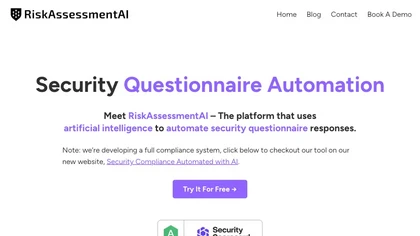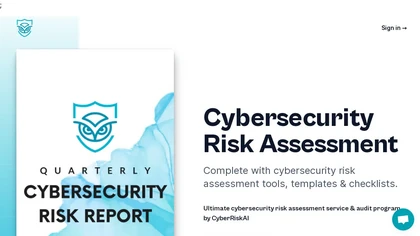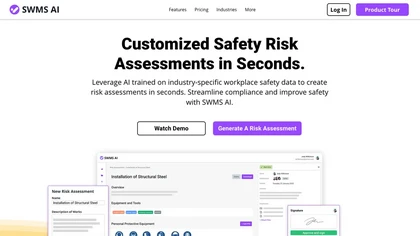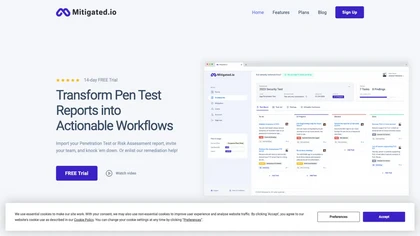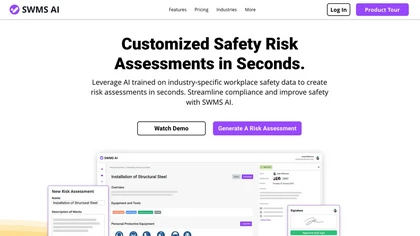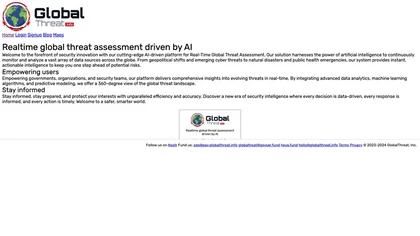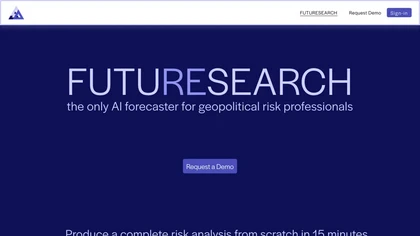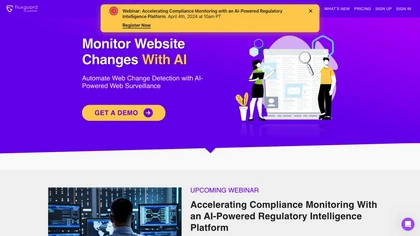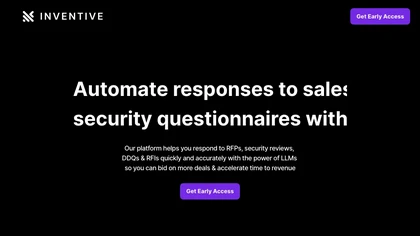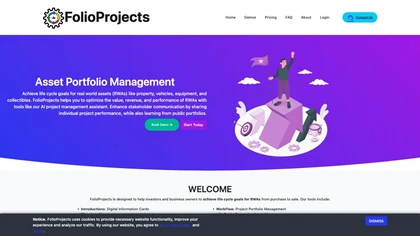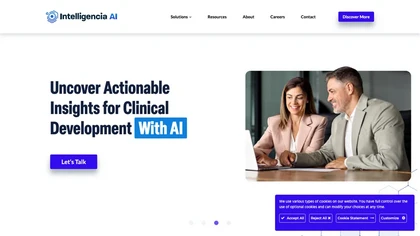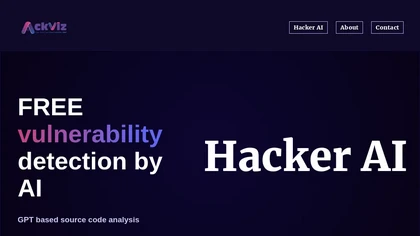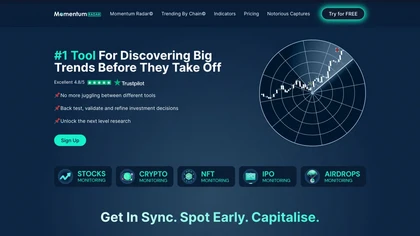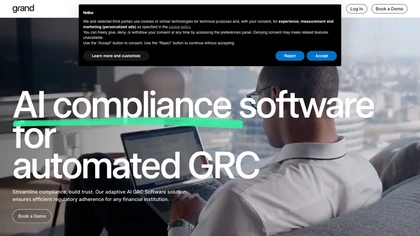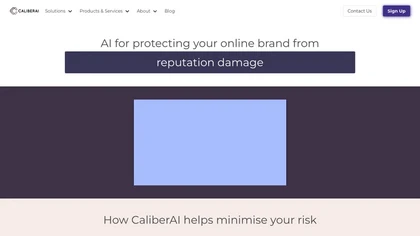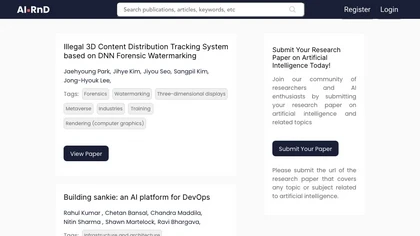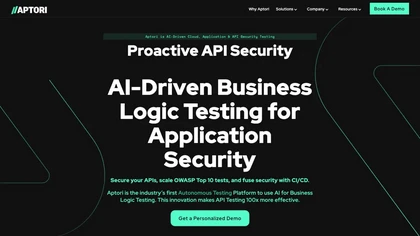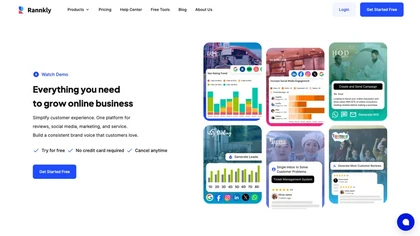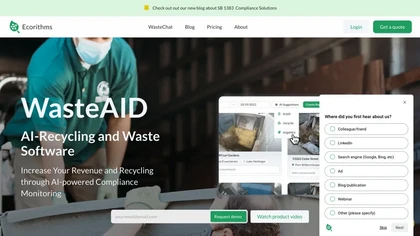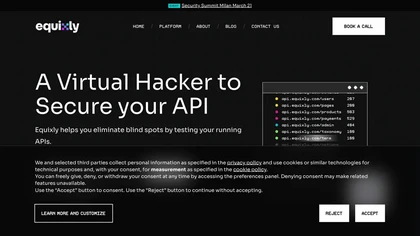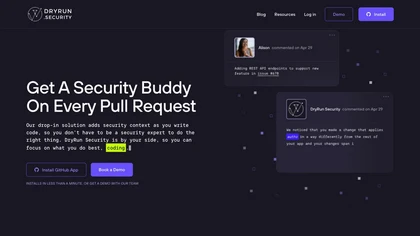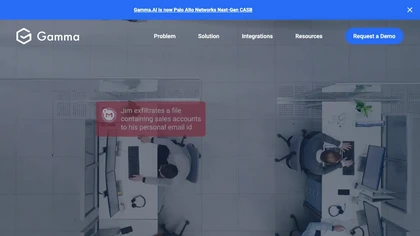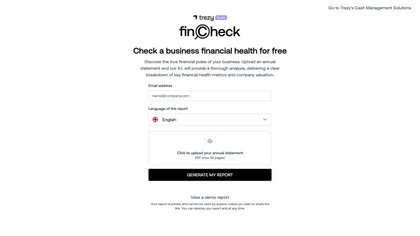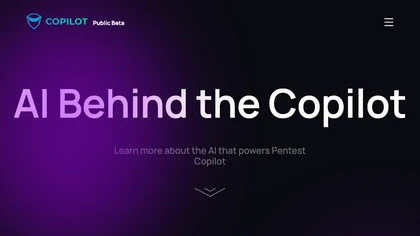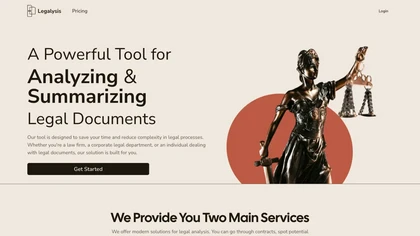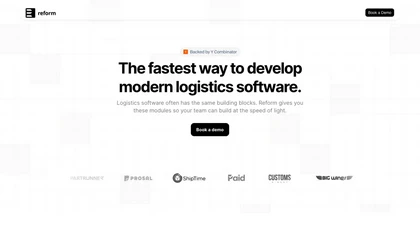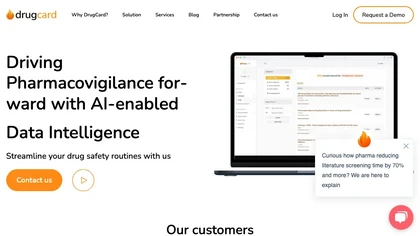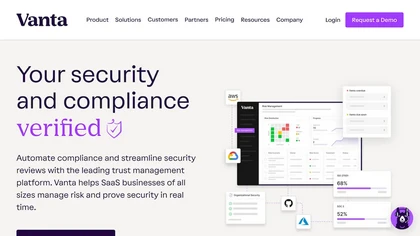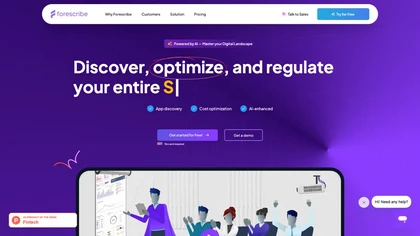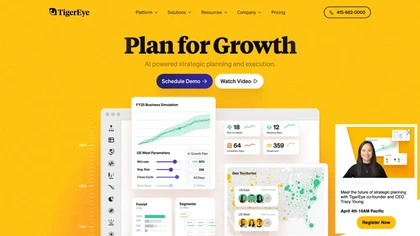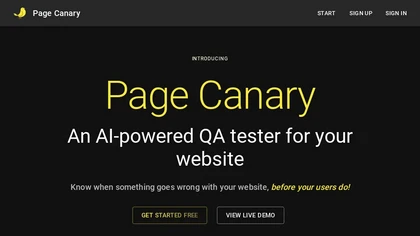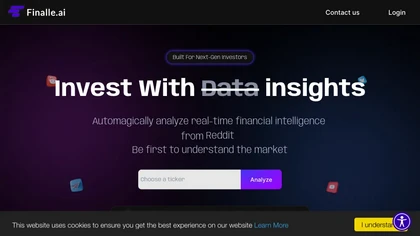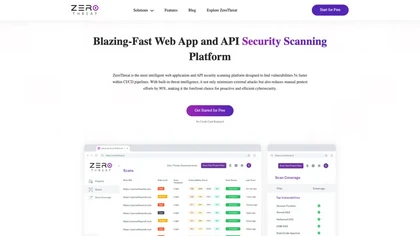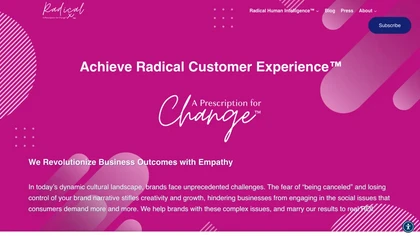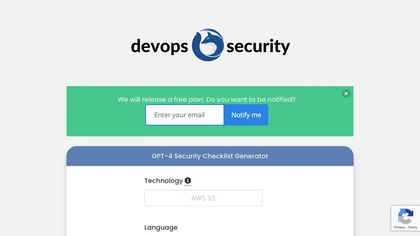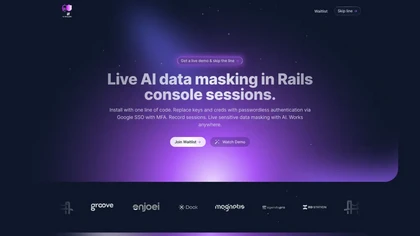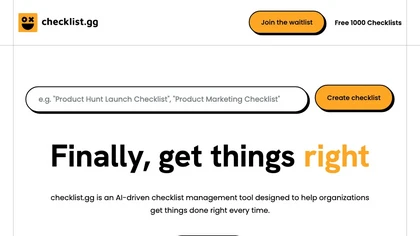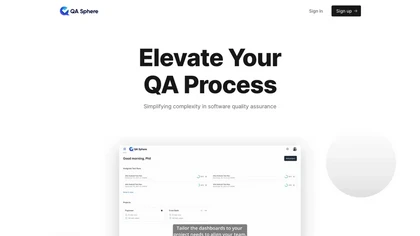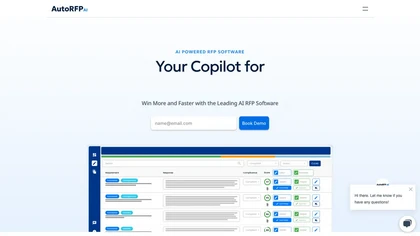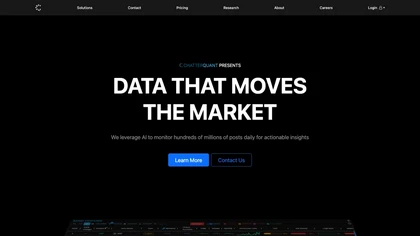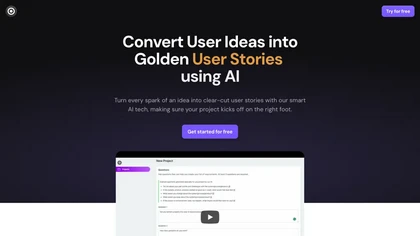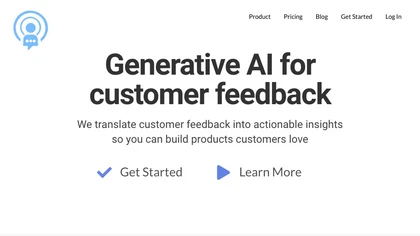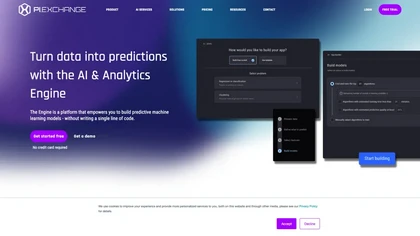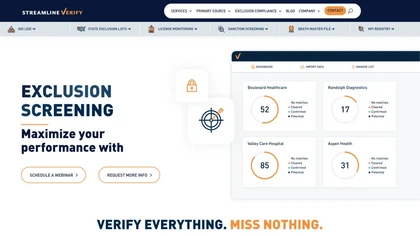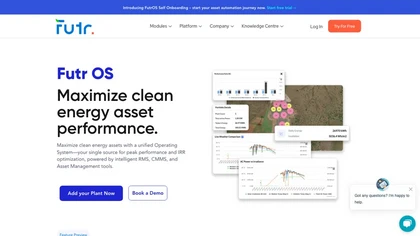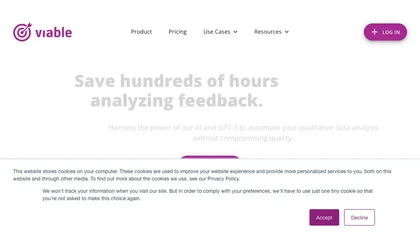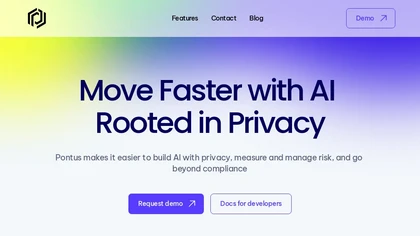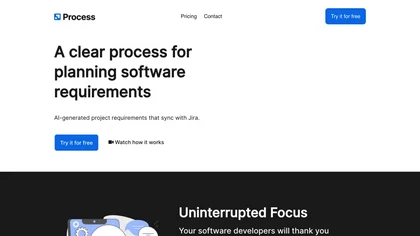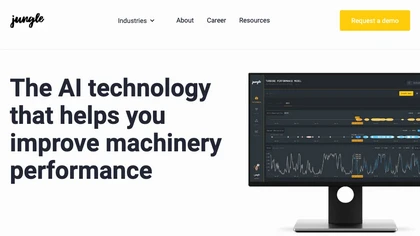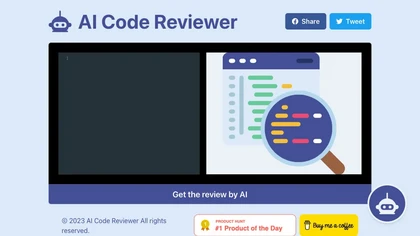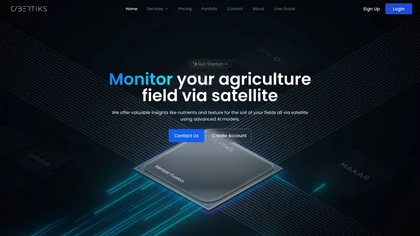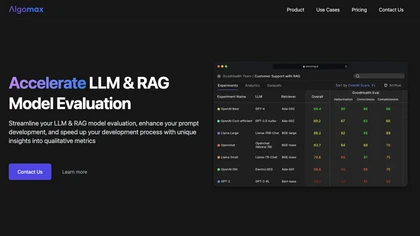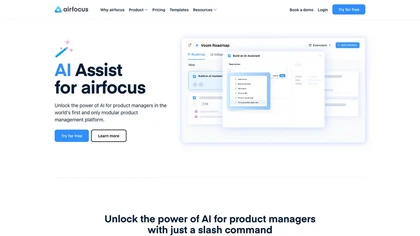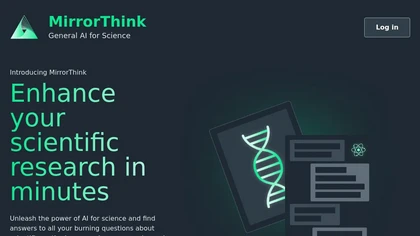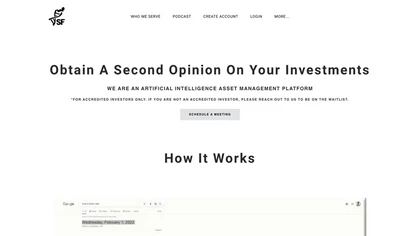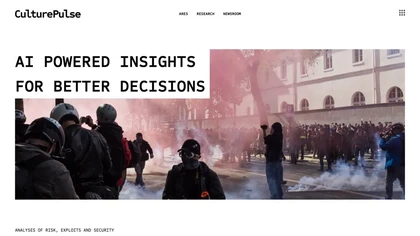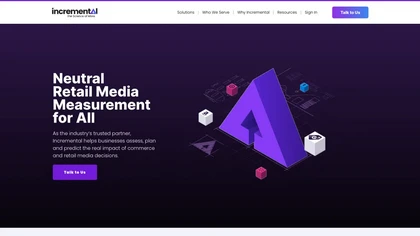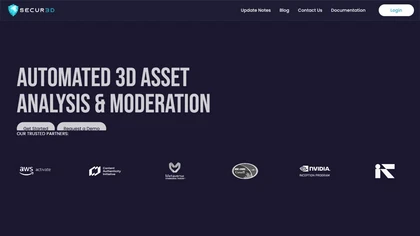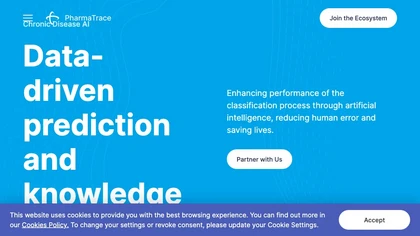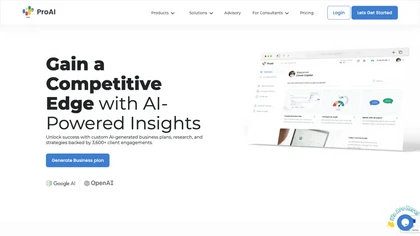AI use cases for Risk Analysis
Generative AI can be applied in various applications for risk analysis. Here are some examples to explore below for inspiration with AI tools to get you started with using AI in risk analysis.
🛠️ 70 AI tools for Risk Analysis
Explore a dynamic list of some of the most popular tools to get you started with various AI use cases and applications for Risk Analysis to streamline your workflows and productivity today.
RiskAssessmentAI features
- Automate security questionnaire responses
- Scan documentation
- Build knowledge base
- Support various assessment formats
- Collaboration between teams
Cyberriskai features
- Cybersecurity risk assessment
- Automated quarterly risk audits
- Nist cybersecurity audit framework
- Comprehensive assessment report
- Employee cybersecurity practices
SWMS AI features
- Tailored risk assessments generation
- Customizable safety policies
- Personalized document generation
- Integration of AI assistant for safety information
- Streamlining compliance processes
Mitigated.io features
- Transforms penetration test risk assessment reports into actionable workflows
- Leverages collaborative workspaces for task assignment and progress tracking
- Provides AI-enriched mitigation guidance for security vulnerabilities
- Supports easy import of assessment reports
- Enables users to enlist security mitigation services directly from the dashboard
SWMS features
- AI risk assessments
- Safety Co-Pilot integration
- Customization options
- Quickly generate safe work sequences
- AI-powered safety recommendations
Inc. features
- Real-time global threat assessment
- Continuous monitoring and analysis of vast data sources
- Actionable intelligence delivery
- Comprehensive insights into evolving threats
- Integration of advanced data analytics, machine learning, and predictive modeling
Futuresearch features
- Comprehensive risk assessments in 15 minutes
- Five-stage AI-powered workflow
- Daily analysis of new scenarios
- Search scenarios based on daily news
- Simulate future outcomes with accurate predictions
🔥
Create your account, save tools & get personal recommendations
Receive a weekly digest of our handpicked top tools.
Unsubscribe anytime
Fluxguard features
- Web Change Monitoring using generative AI
- Screenshots and pixel change detection
- Text change detection and network analysis
- Real-time or scheduled report dispatch
- Email reports with screenshots and text changes
Inventive features
- Streamline rfis, rfqs, security reviews, rfps
- Generate reliable answers with ai
- Reduce reliance on subject matter experts
- Save substantial time and effort
- Up-to-date content
FolioProjects features
- AI project management assistant
- Data-rich dashboards for analysis
- Project portfolio management workflow
- Enterprise asset management life cycle support
- Predictive, prescriptive, and generative AI capabilities
intelligencia.ai features
- Measuring the likelihood of success in drug development
- Identifying underlying drivers contributing to technical and regulatory risks
- Optimizing clinical trial design
- Standardizing risk evaluation processes
- Transparent and explainable AI features
Hacker AI
4.6Hacker AI features
- Source code scanning
- Security weakness identification
- Potential exploitation detection
- Hacker targeting prediction
- Malicious actor analysis
Momentum Radar features
- Monitoring social media platforms and influencers
- Predicting market trends and sentiment shifts
- Providing valuable insights and signals for decision-making
- Intuitive indicators for timing and entry point identification
- Focus on momentum indicators and on-chain data analysis
Grand features
- Automated GRC software
- Efficient regulatory adherence
- Compliance workflows automation
- Policy and regulatory news monitoring
- Insights into regulatory changes
CaliberAI features
- Online article evaluator
- Real-time browser extension
- CMS integration
- Content scanning and risk detection
- AI technology with customizable API thresholds
AI-RnD features
- Access
- Share
- Disseminate
- Promote
- Collaboration
Aptori features
- API security testing
- Business logic testing
- Semantic reasoning technology
- AI-driven test automation
- Continuous risk assessment
Warden features
- Streamlining security workflows
- Automated generation of technical architecture diagrams
- Identification of issues and risks within projects
- Automatic generation of risk factors
- Suggestion of possible mitigations for risks
Rannkly features
- Unified inbox for managing review replies
- Automated review analysis for insights
- Competitor analysis
- Automated responses powered by AI
- Enhancing online reputation and customer experiences
RetireMint features
- Virtual retirement planning assistant
- Assessment of retirement readiness
- Personalized feedback and advice
- Professional assessments in various retirement-related areas
- Comprehensive retirement roadmap building tools and resources
WasteAID features
- Automatic route auditing
- Integration with existing systems
- Audit over 400k generators and 1m+ pickups
- Detect overflow incidents and identify contamination
- Tracking commercial account compliance
Equixly features
- Continuous scanning of APIs for security vulnerabilities
- Detection and fixing of security issues in development process
- Scalable API pentesting capabilities
- Mapping of attack surface and inventory of API landscapes
- Transparent compliance reporting model
DryRun Security features
- Automated security buddy
- Security insights at pull request stage
- Tailored security context
- Real-time security feedback
- Compatible with various languages and frameworks
Gamma.ai
4.8Gamma.ai features
- Continuously monitors employees
- Notifies of security mistakes
FinCheck by Trezy features
- Financial health assessment
- Annual statements analysis
- Multilingual reports
- Privacy control
- Security features
CYBER AI features
- Upload security reports
- Understand security reports
- Unlock data breach reports
- Guide through step-by-step threat hunting process
- Uncover potential cybersecurity threats
Pentest Copilot features
- Automated Pentesting
- Fine tuned AI for security tasks
- AI & human collaboration
- Seamless json integration
- Constrained programming
Legalysis features
- Contract risk analysis
- Document summarization
- Legal Language Model (LLM)
- Cross-country risk pointing
- Time-saving document summarization
Reform features
- Modular building blocks for customized solutions
- State-of-the-art multimodal AI models for logistics documentation
- Automation of data capture for various documents
- Seamless integration with universal transportation management systems (TMS) through a universal API
- Embeddable customer dashboards for real-time data insights
DrugCard features
- Automates drug safety routines
- Multiple languages and countries
- High-performance screening
Vanta features
- Automating security compliance processes
- Integration with over 300 security tools
- AI capabilities for accelerating security workflows
- Vendor risk management assistance
- Compliance with over 25 frameworks
Forescribe features
- Discover, analyze, and manage integrations of SaaS applications
- Provide real-time insights on SaaS usage and compliance
- Automated compliance checks for SaaS applications
- Offer cost optimization suggestions for SaaS applications
- Enhance transparency in digital landscape governance
TigerEye features
- Scenario planning
- AI outcome prediction
- Segment definition
- Territory assignment
- Collaborative pipeline management
Page Canary features
- Ssl certificate expiry alerts
- Custom web page audits
- Monitoring website functionality
- Accessibility checks
- Compliance with security best practices
Teste.ai features
- Comprehensive test scenario and case creation
- Wide range of test scenario generation
- AI-powered test planning and execution
- Automatic test case generation based on documentation
- Seamless collaboration through sharing of test plans and results
Finalle features
- Twitter analysis
- Reddit analysis
- News analysis
- Blog post analysis
- Market insights
ZeroThreat features
- AI-Powered Security
- Business Logic Testing Generated by AI
- Role-based Access Controls
- REST API and GraphQL Testing
- Human-like Penetration Testing
PrivacyQuest features
- Record processing activities management
- Incident/breach management
- Individual rights management
- Consent management
- Automated document generation
Radical Human Intelligence™ features
- 3 R methodology support
- Deep stakeholder understanding
- Human level connections
- Informed decision making
- Fostering trust and collaboration
Devops Security features
- Generate security checklists
- Multiple language support
- Automatic success report generation
- Sample ruby rails for scaling threat modeling
- Email support
Privacy Observer features
- Automatically scans privacy policies
- Comprehensive score
- Detailed information on data handling
- Unlimited scans
- Anonymous checks
Phishr features
- Interactive training
- Shows users what they missed in the email
- Preview of user experience when getting caught out
- Lifetime access for $1,400
- Training to identify phishing emails
Rails Guard features
- Live data masking for Rails console sessions
- Shielding Rails console access
- Passwordless authentication via Google SSO and MFA
- Automates employee onboarding and off-boarding
- Real-time sensitive data masking
checklist.gg features
- Checklist management
- Task management
- Workflow management
- Real-time collaboration
- Integration with existing tools
QA Sphere features
- Digital checklist for managing tests
- Building a library of test cases
- Planning tests efficiently
- Organized test case library
- Integration with issue trackers
ContentCal features
- Generating a content calendar
- Suggesting content ideas
- Creating a content strategy
- Early access subscription
AutoRFP
5AutoRFP features
- AI-driven response generation
- Task automation
- Real-time collaboration
- AI content search
- Secure single sign-on capabilities
ChatterQuant features
- Enterprise dashboards
- Real-time data access through APIs and embeds
- REST WebSocket APIs (upcoming)
- APIs for interaction and read access
- Track mentions of stocks and crypto tickers on social media platforms
Get Requirements features
- Requirement gathering automation
- User story generation
- Stakeholder voice integration
- Real-time feedback
- Smart follow-ups
Rargus features
- Customer feedback analysis
- Segment feedback
- Compile customer feedback
- Data-driven decisions
Pi Exchange features
- End-to-end machine-learning tool
- Eliminates the need for coding
- Smart data preparation
- Model development
- Deployment functionalities
Streamline Verify features
- Screening against various databases including OIG LEIE, state exclusion lists, license monitoring, sanction screening, death master file, and NPI registry
- One-stop portal for quick identification and resolution of compliance screening issues
- API integration for future compliance needs
- Enhances efficiency in executing exclusion screening and credential management
- Trusted by over 10,000 establishments
FutrOS features
- Unified operating system
- Warranty management
- Digital twin technology
- Automated performance insights
- Real-time alerts
viable features
- Automated qualitative data analysis
- Customer feedback understanding
- Nlp technology
- Feedback analysis
Pontus features
- Privacy-focused ai platform
- Smart anonymization feature
- Intuitive dashboard for auditing compliance
- Trust-made-easy components
- Secure document storage and privacy-aware caching
- Works with common llm providers
- Incorporates toxicity checking
Process features
- AI-powered task generation
- Automated task creation process
- Task generation based on project requirements and deadlines
- Advanced security measures for data privacy
- Workflow simplification
Jungle AI features
- Real-time monitoring
- Abnormal behavior detection
- Issue resolution collaboration
- Customizable for different industries
- Data-driven decision making
AI Code Reviewer features
- Automatically analyzing code for syntax errors and security vulnerabilities
- Suggesting improvements and best practices for code quality
- Identifying potential bugs and areas for optimization
- Generating automated test cases to ensure correctness of the code
- Tracking code changes and providing historical reports on code quality
Cybertiks features
- Field monitoring through satellite imagery
- Utilizes advanced AI models for analysis
- Provides accurate metrics remotely
- Integrates precise AI models trained on thousands of fields
- Utilizes sensor fusion to integrate multiple data sources
Algomax features
- Smooth integration into pipeline
- Comprehensive insights through intuitive dashboard
- Accurate evaluation engine
- Detailed visualizations and constructive feedback
- Qualitative and quantitative metrics for contextual quality measurement
AI Assist by airfocus features
- AI-generated ideas and drafts
- Sentiment analysis
- Utilize slash commands
- Prompt features for PRDs and user stories creation
- Feedback sentiment analysis
GeniePM features
- Product requirements
- User stories
- Use cases
Mirrorthink features
- Academic research analysis
- Mathematical calculations
- Scientific market insights
- Reliable research partner
- Gpt-4 integration
RhinoWatchlist features
- Research stock trends
- Manage watchlist
- Provide insights on individual stock movements
- Global financial trends analysis
- Personalized analytics
SageFusion features
- Trend forecasting
- Statistical models and financial statement analysis
- Risk management through portfolio hedging
- Transparent and liquid funds through Interactive Brokers
- Quick fund withdrawal within 48 hours
CulturePulse x Reddit features
- Insights and analyses generation
- Creation of psychologically realistic digital twins
- Global news stream analysis
- Simulation of risk-free environments
- Real-time analytics and predictive AI capabilities
Incremental ai features
- Retail media measurement
- Commerce analytics
- Portfolio management
- Predictive analytics
- Cross-channel commerce analytics
Secur3D features
- Automated 3D asset analysis
- Geometry and texture analysis for IP protection
- Detection of art theft and brand infringement
- Content categorization and marketplace description generation
- Support for asset comparison and texture matching
PharmaTrace features
- Chronic disease management
- Early disease detection
- Economic costs reduction
- Budget forecasting
- Decision support
ProAI features
- Business strategy generator
- Interactive Guidance and follow up
- Metrics monitoring and insights
- Market research
- Financial forecast
- Pitch deck generator
